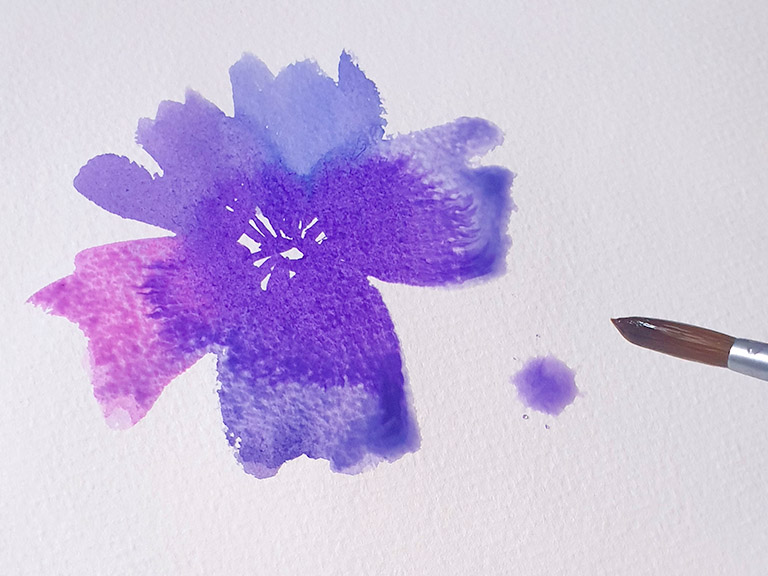Watercolour painting is a beautiful, and challenging, art medium that requires patience, precision, and technique. One of the most frustrating parts for watercolour beginners is making mistakes and not knowing how to fix them. Because watercolour is translucent, it’s hard to layer over and cover up mistakes.
However, the good news is that many mistakes can be corrected, whether during the painting process or after the painting has dried. Here’s some options to get your painting back on track.
This is part of my watercolour basics series of guides for beginners.
Common mistakes when painting in watercolour
I make all sorts of mistakes when I’m working – do any of these happen to you?
- Dripping paint off my brush
- Splashing water out of the cups and onto the paper
- Dropping my brush right in the painting
- Flicking tiny splodges all over the paper
- Putting too much water down and creating a big puddle
- Putting completely the wrong colour down
- Making the colour too dark
- Smudging areas together so they start to ugly-bleed
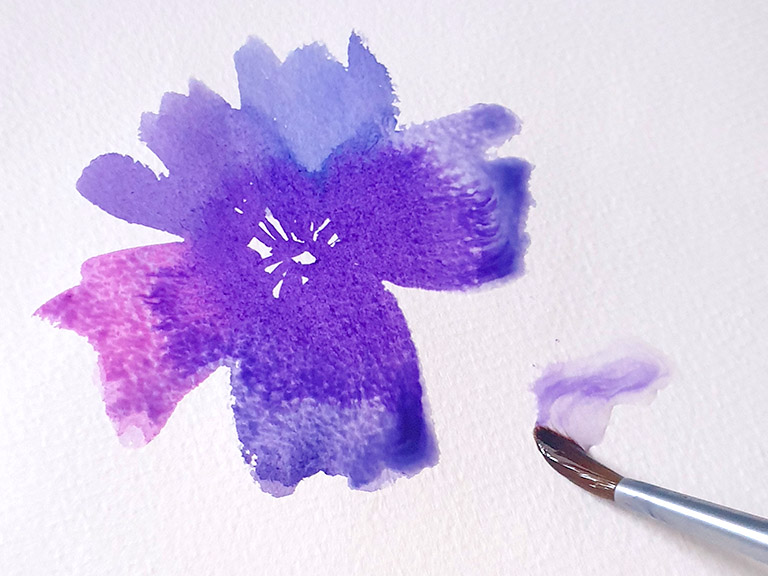
Fixing mistakes during painting
The easiest way to fix mistakes in watercolour is to get straight on it while the paint is still wet.
Lift the paint with a brush
If you’ve made a small mistake, you can use a dry or damp, clean brush to lift the colour away. Gently press the brush against the colour and then lift it away. Repeat until the desired amount of colour is removed.
If you’ve got paint where you don’t want it, perhaps by spattering your brush in the wrong place, you can add clean water to dilute it and then lift up using the same method above.
If your watercolour paper has a texture, you may need to swirl the brush around in circles to ensure you’re getting into the paper as much as possible.
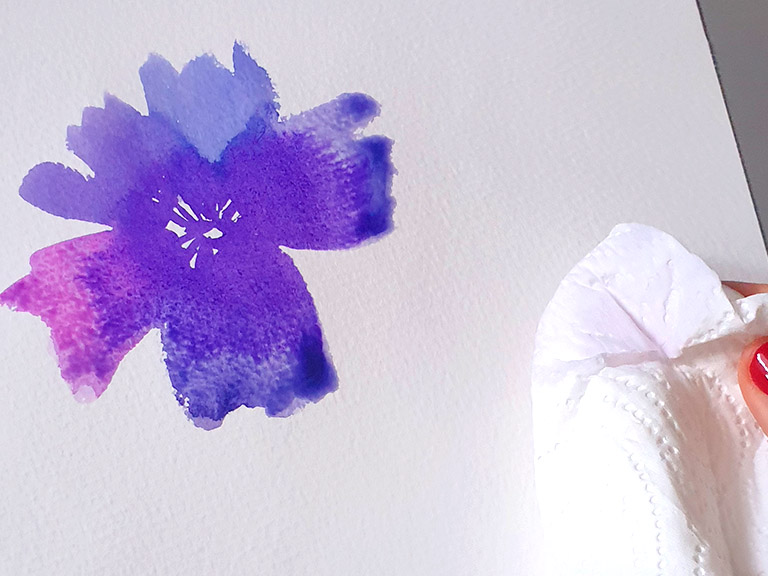
Lift the paint with something absorbent
You can use a paper towel or a sponge to correct small mistakes in watercolour painting. Use a dry or damp towel to lift up the paint and water. If the colour doesn’t completely lift, you can add more clean water and keep pressing with your paper towel or sponge until it lifts up.
Lifting with something absorbent is great if you’ve put too much water on your paper. Let the paper dry for a few minutes and then you can paint over it.
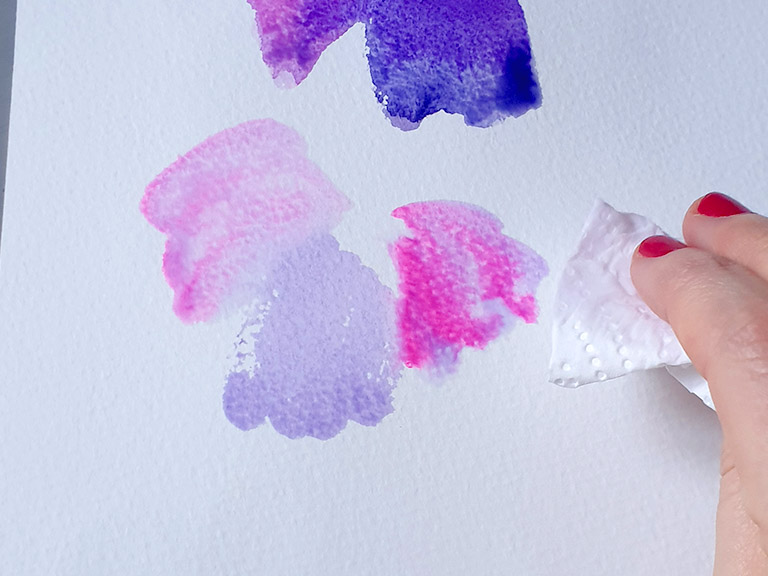
Fixing mistakes after painting
Lifting the paint
You can try the lifting techniques above after the paint has dried, but it may not entirely lift out. You can usually fade the colour a bit though, so it’s worth trying.
Paint over the mistake
You can paint over the mistake using a new layer of colour. Simply mix the colour you need, ideally in a darker tone, and then apply it over the mistake.
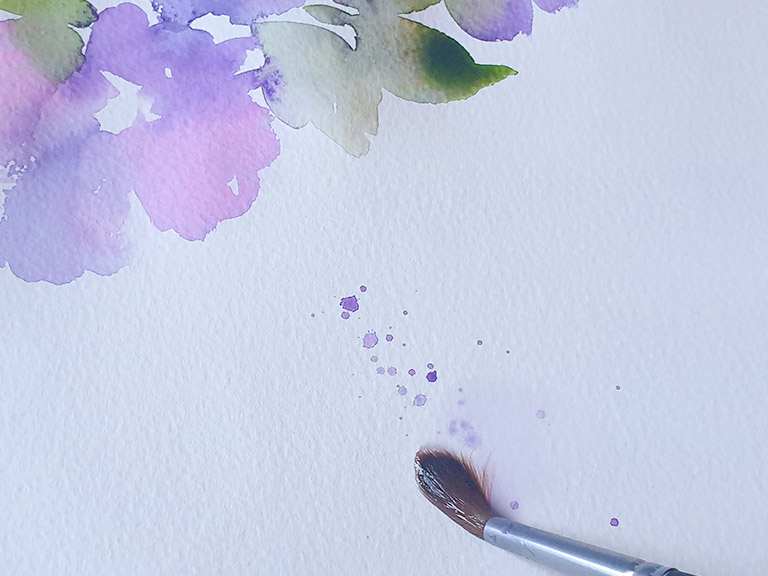
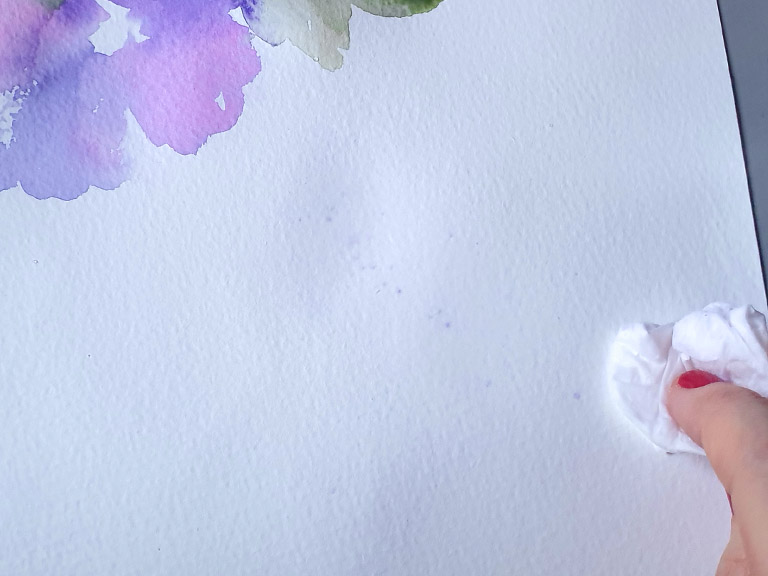
Sandpaper it off
This sounds crazy, and it can only be done gently and on thick watercolour paper! If you have made a mistake after the painting has dried, sandpaper can be used to slowly buff off the colour. Gently sand the area until the desired result is achieved.
Use white paint like gouache
If your mistake is on the white area, you can use an opaque white paint like gouache or Bleedproof White. Apply the paint to the area that needs correction to cover it up.
Gesso or watercolour ground
Another option is to use gesso, a white, paint-like substance, to cover up mistakes. Simply apply a thin layer of gesso to the area that needs correction and then paint over it with the correct colour.
What to do if your painting doesn’t turn out right
Not every painting you create will be ready to display! Having some failures is part of being an artist, and it even happens to the professionals.
Here’s what to do when it happens to you:
- Paint on the back of your paper! Watercolour paper is expensive, so I like to turn it over and have another go.
- Study the painting to see what you don’t like – what can you learn from it?
- Paint over it with something opaque like gouache or acrylic to create a blank canvas for another painting.
- Cut it up and use it in a collage.
- Throw it away! It’s just paper and if you really hate it, pop it in your recycling bin and move on to the next painting.
Ultimately, it’s just one painting – you’ll probably create hundreds, thousands, millions of artworks in your life. If you make a mistake that you can’t fix, put it aside and create another painting. Just keep going!
More watercolour painting advice
Download my free watercolour supply guide
Feeling overwhelmed and confused by watercolour paints, papers and brushes? Download my free guide filled with insider info, including a list of good supplies for every budget, and my complete supply list!
